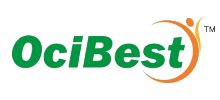
Rich Heritage
Our journey began back in the 1950s with our founder, Mr. Ramlal Agarwal, a renowned expert in herb identification and collection. Fascinated by the ancient Indian system of Ayurvedic medicine, he developed a deep interest in herbs and a passion for animal care. This led him to explore how these herbs could benefit animal health, marking the start of an exciting chapter in herbal medicines for the animal healthcare industry.
Continuing his legacy, his son, Mr. R.K. Agarwal established a small-scale R&D facility in Bangalore in 1970, fueling rigorous research. We combined traditional herbal knowledge with modern science to create innovative products for the evolving challenges in human and animal healthcare.
As our business grew, we needed a larger, more advanced research facility. In 1996, our existing R&D center was transformed into a state-of-the-art facility, equipped with modern technology and the latest lab instruments.

Modern Outlook
In 1998, under the dynamic leadership of our current Managing Director, Mr. Anurag Agarwal, our organization underwent a significant transformation. We rebranded as Natural Remedies and transitioned into a professionally managed enterprise, laying the foundation for future growth and innovation.
This pivotal change set the stage for our entry into the human healthcare market in 2000. We expanded our expertise, leveraging our extensive knowledge of herbal remedies to develop high-quality solutions for both human and animal health. Our commitment to rigorous research and development, coupled with our focus on integrating traditional knowledge with modern science, allowed us to create products that meet the highest standards of efficacy and safety.
Under Mr. Agarwal’s leadership, Natural Remedies has grown into a trusted name in the healthcare industry, known for our dedication to quality, innovation, and customer satisfaction. We continue to push the boundaries of herbal medicine, striving to improve the health and well-being of our customers worldwide.
-
1950
Establishment of Natural Remedies catering to animal health
-
1996
Integrated our knowledge with modern science to set up our R&D center catering to the
emerging concerns on human health -
2000
Launch of a standardized extracts division
-
2005
Go beyond the ordinary in Cognitive Health with BacoMind™! This groundbreaking, clinically proven, and pioneering Bacopa monnieri extract unleashes the power of 9 bioactive compounds to organically boost memory, focus, learning, and overall brain function across all age groups.
-
2009
Unlock the power of fast-acting immune support with AP-Bio®! This clinically validated Andrographis paniculata extract combines 7 bioactives to tackle symptoms of cold & flu like sneezing, runny nose, cough and more. Effective in just 3 days, at a low dose of 200 mg per day.
-
2010
Enhance digestive health naturally with GutGard®! This clinically studied, flavonoid-rich extract of licorice (Glycyrrhiza glabra) promotes daily digestive balance. GutGard® is clinically studied for functional dyspepsia which includes heartburn & regurgitation, GERD, leaky gut, and even H. pylori management.
-
2011
Launch of
-
2012
Discover the untapped powers of water-soluble fraction of turmeric for joint health with Turmacin®! This groundbreaking, scientifically proven ingredient harnesses the water-soluble benefits of turmeric using its patented bio active compound "Turmerosaccharides™
-
2022
Unlock the inner calm and restful nights with Holixer™! This clinically validated extract of Holy Basil utilizes innovative B.O.T. (Bioactive Optimization Technology) to deliver Ocimum Bioactive Complex (OBC) making it effective at a dose of 250 mg per day.
- 1950
- 1996
- 2000
- 2005
- 2009
- 2010
- 2011
- 2012
- 2022
Our Vision & Values
We harness nature and apply science for health and happiness by:

Doing the right thing
We believe in being ethical
Winning together
We grow together
Staying till wow
We value people and their experiences
Learn & Evolve
We Learn and Evolve together

BEING
USEFUL

Key Members


















